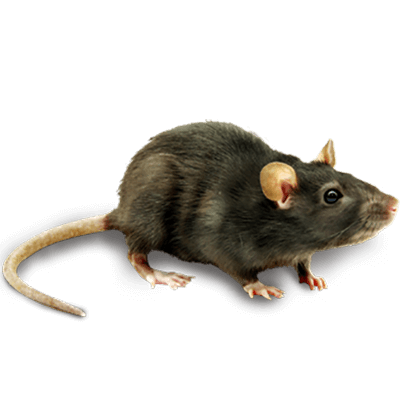How To Control Mice
Mice are shy, nocturnal rodents that seek food, shelter and safety in our homes. A mouse may nest outdoors, but will just as readily make a nest inside your home. They may nest in walls, furniture, boxes, under appliances or anywhere they can live relatively undisturbed.
Mice will eat many things but prefer grain and seeds. They will eat cereal, bread, cookies and similar things. They get most of their water from their food and so need little additional water.
How To Keep Mice Out of a Home
Mice are small and can get through surprisingly small openings. They will also gnaw through wood to make an opening. Therefore, it can be fairly difficult to close all possible access to your home. However, even if you can’t close all the openings, closing some will reduce the likelihood of mice entering your home.
Many people focus on filling holes and cracks inside their home. The problem is that in the typical home there are too many pathways through walls, attics, and crawlspaces for you to block them all. A much more effective method to block access is from the outside of your home.
Walk around the perimeter of your home and look the following:
- Cut back plants so that they don’t touch the building.
- Keep garbage cans as far from your home as possible.
- Inspect the foundation of your home for openings. Anything larger than a dime is large enough for a mouse to pass through.
- Block all openings with rigid metal screen or other appropriate material.
How To Catch Mice
We are advocates of non-toxic control. While poison may be necessary for rodent control, we believe it should be used only as a last resort. The problem with poisons is the unintended consequences such as a pet being poisoned through catching a poisoned rodent. Children are at risk if they come in contact with poison traps. Many poisons often find there way into our waterways and groundwater. Finally, a poisoned rodent may remain in your home to die. A dead mouse hidden away in a wall or other difficult to access location may result in a strong odor for a couple weeks or more.
Cats have been a natural source of rodent control through the ages. While this may be an effective method for control, it does put your pet at risk of injury, disease and the possibility of poisoning (your neighbors may be using poison bait).
Rodent Behavior
Unlike rats, mice are less suspicious of traps and will investigate bait readily. Traps include the classic spring trap (aka snap trap), sticky traps, live capture and variations on the spring trap. Understanding mouse behavior will help you to use these traps more effectively.
Place traps where mice are active. Droppings and shredded bits of paper are signs that mice are active. Mice tend to travel along edges, such as along baseboards. They are less likely to cross a room than to run around the perimeter of it. Therefore it is best to place the traps along the routes they travel.
Mice are attracted to peanut butter and we have found them fond of goldfish crackers too. We found both were equally effective baits. If you use peanut butter on a spring trap, the key is to coat the trigger so that it really sticks. If the peanut butter is placed on the top and bottom of the trigger, the mouse is much more likely to set off the trap.
For catching mice, we had good success with sticky traps. However, we found the mouse size traps to be too easy for the mouse to escape from. When we used the rat sized trap, we had excellent results.
If you are of a mind to humanely release a rodent from a sticky trap, coating it with corn oil will release it from the trap. Whether you release it or not, you must exercise caution to avoid being bitten. We recommend wearing heavy leather gloves and handling the end of the trap opposite from the rodents head. If you encounter a live rodent and plan to kill it, dropping the entire trap into a bucket of water is a relatively humane method.

